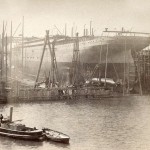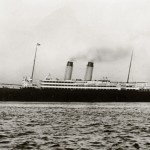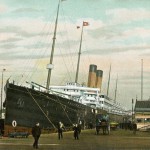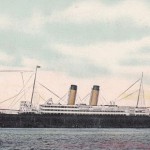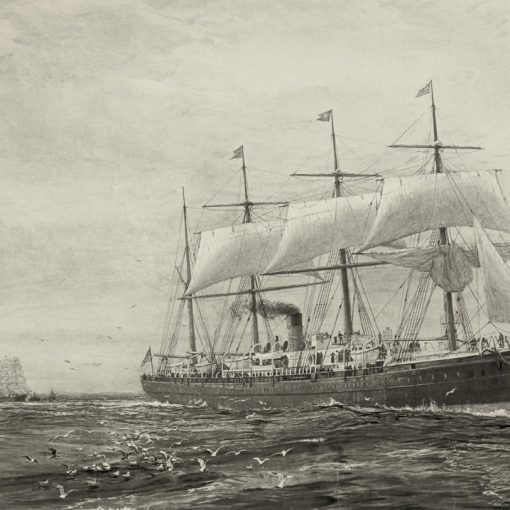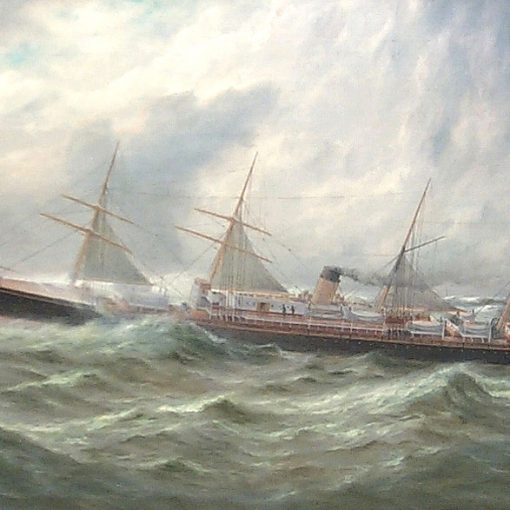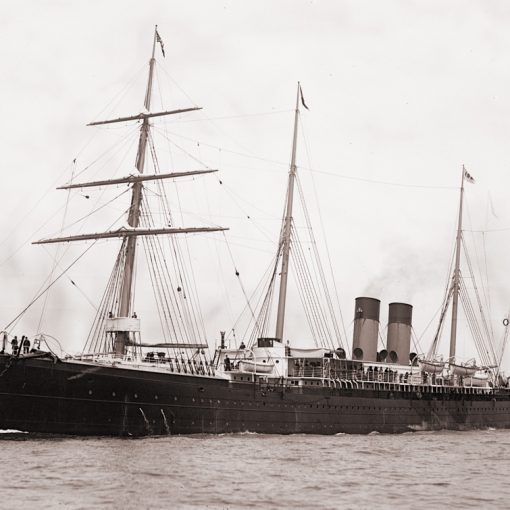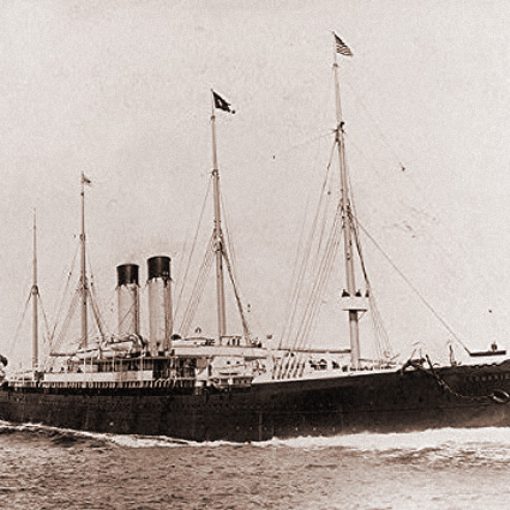1903 – 1932
The beginning of the construction of White Star’s quartet ‘The Big Four’ had started off with Celtic in 1901. That was the last ship ordered by Thomas Henry Ismay, father of the new Managing Director; Joseph Bruce Ismay. After T. H. Ismay’s death the order of Oceanic’s sister-ship Olympic was cancelled, and all effort was put in Bruce Ismay’s project of expanding the sole Celtic into what was to be known as the ‘Big Four’.
The second vessel in the Big Four was the Cedric; the first ship ordered with a quartet in mind. The Celtic, when launched in 1901, had been the first vessel to exceed the Great Eastern’s tonnage. The Cedric would be almost an identical sister to the Celtic, except for some minor details. She would have her Welin davits in place of radials (the only one with that construction amongst the Big Four), and a double tier of decks was placed below the mizzen mast. The Cedric’s net tonnage was 71 tons more than the Celtic’s.
As with the Celtic, the Cedric’s name was not obvious in pronunciation. Celtic was strangely enough pronounced [Seltik], whilst the Cedric should be pronounced as [Si:drik]. The public would however use the more obvious [Sedrik].
On August 21, 1902, the Cedric was launched. Because of her extra net tonnage, she became the largest moving object ever built. On January 31, the next year, the ship was handed over to the White Star Line, after satisfactory sea trials. Just as the Celtic, the Cedric had an average service speed of about 16 knots. The White Star Line’s slogan was now: Comfort, safety and size. Speed was left behind in order to gain economic success. The Cedric’s maiden voyage was on February 11, the same year. She sailed the company’s main route from Liverpool to New York. During the voyage, it was noticed that the Cedric had slightly surpassed her sister, the Celtic, in the matter of luxury.
In the winter of 1906, the Cedric sailed off to the Mediterranean on a 5-week cruise just as the Celtic had done when she was new. There always seemed to be people for such things, and the company decided that it should be an annual service for the Cedric. The popularity for these cruisings continued, and in early 1911, the Cedric took two sailings to the Mediterranean.
On April 14-15, 1912, the Cedric was in New York. At the same time the White Star Line’s new flagship, the Titanic struck an iceberg and sank beneath the waves with over 1,500 souls. The surviving commanders on board the rescue vessel Carpathia telegraphed to New York and ordered the Cedric to remain in port until the Carpathia arrived. Among others, Bruce Ismay wanted to go straight back to England before getting stuck in the American disaster hearings. When in New York, Ismay was ordered to the Senate Investigation, and he remained in New York while great many survivors of the Titanic’s crew returned home on board the Cedric.
When World War 1 began in 1914, the Cedric was handed over to the Admiralty, who converted her to an Armed Merchant Cruiser. The ship served in the 10th Cruiser Squadron together with for instance the Celtic and Teutonic. Both the Cedric and the Teutonic sailed in the ‘A’ patrol. In 1916 she was turned into a troop ship on the Atlantic and later on the route to Egypt. In 1918, before the war’s end on January 29, the Cedric accidentally rammed and sank the Canadian Pacific steamer Montreal when they sailed together in convoy. On December 14, the war was over and the Cedric returned to commercial service before she had been converted back to her old accommodations. However, in September 1919, the Cedric was refitted and returned entirely to peacetime service.
The Cedric, who had lived a rather peaceful and happy life until now, was not all immune to peacetime problems, though. In 1923 she collided in extreme fog with the Cunarder Scythia just outside Ireland. None of the ships sank, fortunately, but the material damage was considerable. Soon, however, the Cedric was back in service, which continued as before until 1928 when she was converted into a Cabin Class liner as so many other ships in this period of time.
In 1929 the Depression came and all of those old ships that were still in service went to the scrap yard one by one. The Cedric was no exception, and on September 5, 1931 she made her final crossing to New York. When she was home again and taken out of service the dashing new motor vessel Britannic had already replaced her. The next year the Cedric was sold for £22,150 to Thos. W. Ward, and on January 11 she sailed under own steam from Liverpool to be broken up at Inverkeithing. The second ship of the ‘Big Four’ was also the second to leave company service.
Specifications
- 700 feet (213.8 m) long
- 75.3 feet (23 m) wide
- 21,035 gross tons
- Steam quadruple-expansion engines powering two propellers
- 16 knot service speed
- Passenger capacity of 2,875 people

